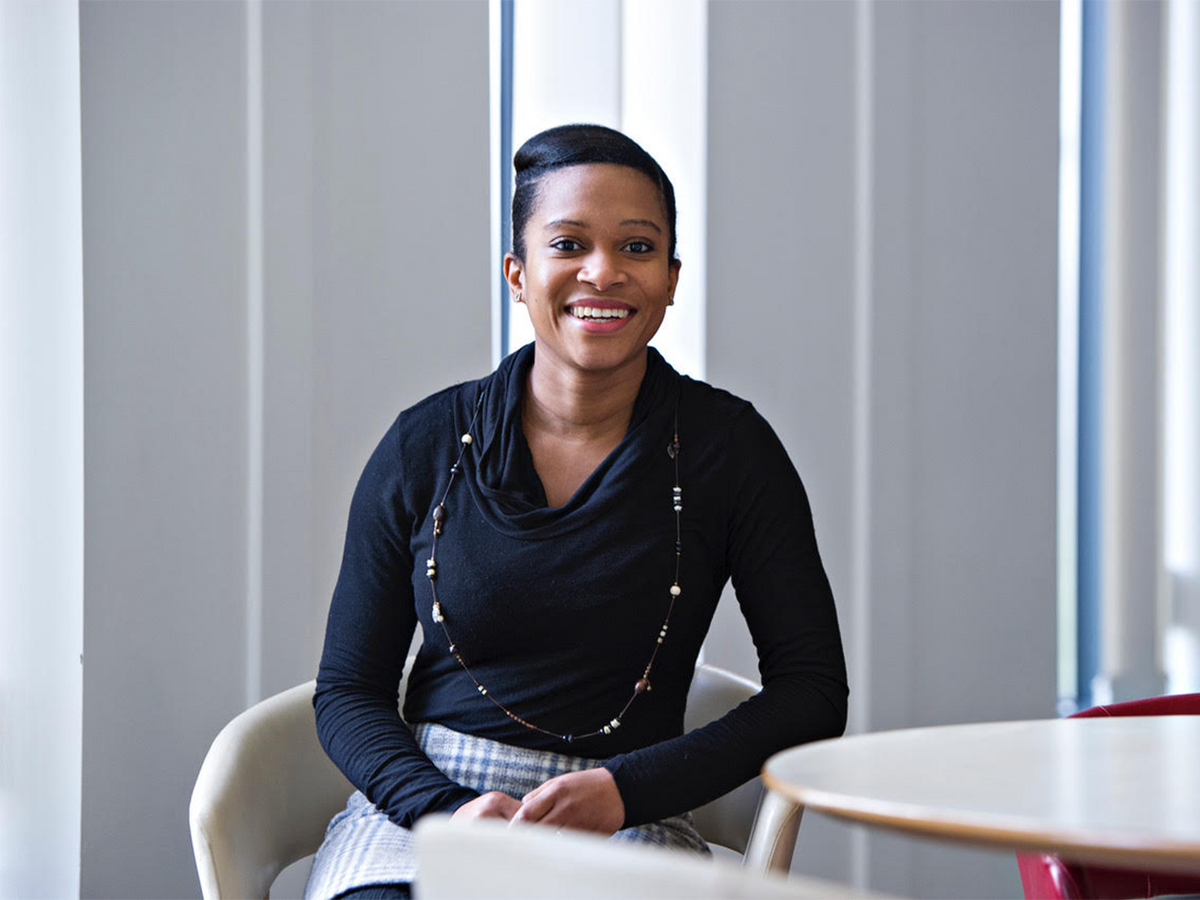THE INSTITUTEFemale and male students perform more or less equally in mathematics and science on standardized tests, according to the National Girls Collaborative Project, so why are the science, technology, engineering, and mathematics fields still dominated by men?
IEEE Member Kerrine Bryan is trying to increase the number of women and other underrepresented groups in STEM fields by changing the way children perceive careers in those disciplines. She and her brother, Jason, founded Butterfly Books in London in 2015 in hopes that the children's books they write and publish will help to remove gender stereotypes. Butterfly titles include My Mummy Is an Engineer and My Mummy Is a Scientist. The brother and sister are working on a new book, My Daddy Is a Nurse, in partnership with Nursing Now England, which is part of the National Health Service.
“The creativity it takes to produce the books is similar to the creativity used in engineering," Bryan says. “Even though they're completely different fields, they do overlap.
“I wanted the first book we published to be about engineering, because I knew what message I wanted to send out to little girls and boys: that engineering is an option if they love problem-solving."
She has a master's degree in electrical engineering from the University of Birmingham in England and a master's degree in business administration from Loughborough University, also in England. In her day job, she is a lead power systems engineer at WSP USA, an engineering consulting company in New York City.
In this interview with The Institute, she talks about her career choice and what led her to establish Butterfly Books with her brother.
What inspired you to get into engineering?
I actually didn't know what engineering was until I was about 17 years old. I always enjoyed problem-solving, math, and science, but no one told me engineering was a career option. I didn't have any engineers in my family, so I wasn't exposed to that career. My high school career advisor told me I should become an accountant because I was good at math.
It was actually a math teacher who told me about a three-day residential course about engineering that was being offered by the University of Glamorgan, now the University of South Wales. I really enjoyed all the activities and networking events that we did, and that's what made me go into STEM.
What led you to write children's books?
The University of Birmingham had a program that sent volunteers to secondary schools to help teachers with engineering projects such as building a miniature race car with the students. It was during my time volunteering that I realized that there were so many children who had the same misconceptions that I did about engineering. Some of these misconceptions were that engineering wasn't for girls, it was a hands-on job, and engineers wore a hard hat all day. That led me to want to reach more children in hopes they would pursue the field.
By writing these books, I can provide schools and parents with a resource that will explain what engineering is—in a fun way.
Who are the members of the publishing team?
At first it was just Jason and I. He has an English degree from Aston University, in Birmingham, so I thought he'd be a good fit. At the time, he had a young daughter. He wanted her to learn that she could pursue whatever career and passion she chose and not be limited by her gender. He believed writing a book that included that message was important.
The next person I recruited was illustrator Marissa Peguinho, a friend from dance class who likes to draw. Then our editor, Corey Brotherson.
That was our initial team until we started to work with ASP Public Relations for our media outreach about two years after founding the company.
How do you publicize your books?
As a self-publisher, it can be difficult to connect with the general public and to get the mainstream media to promote the books—which is why we started working with ASP. For the moment, we use word of mouth and talk to media outlets interested in our work. Thanks to these interviews, we've gotten more attention from schools.
I plan to work with local schools to furnish one of my books to students and include hands-on activities related to the career the children are reading about. One example is to have a circuit-building activity for children reading My Mummy Is an Engineer.
Why do you think boys show more interest in engineering than girls do?
I think it's due to what is shown on TV. When engineering is introduced to children, it's generally shown as a hands-on job done by men. But in reality, it is mainly theoretic, office-based, and requires problem-solving. The job can be done by women. To get rid of the misconceptions, I think we have to make sure that the media, parents, and teachers understand exactly what engineering entails.
What would you say to a girl who's thinking about pursuing engineering?
Speak to as many engineers as possible. If the girl doesn't know any engineers, there are many organizations, such as IEEE and the Institution of Engineering and Technology, that can put her in contact with professionals or provide information. Great ways to learn about engineering are the IEEE TryEngineering Summer Institute and EPICS in IEEE. These programs teach preuniversity students about the field through hands-on activities. That way a girl can get a taste of the different areas within engineering and see which one she enjoys most.
Joanna Goodrich is the associate editor of The Institute, covering the work and accomplishments of IEEE members and IEEE and technology-related events. She has a master's degree in health communications from Rutgers University, in New Brunswick, N.J.



